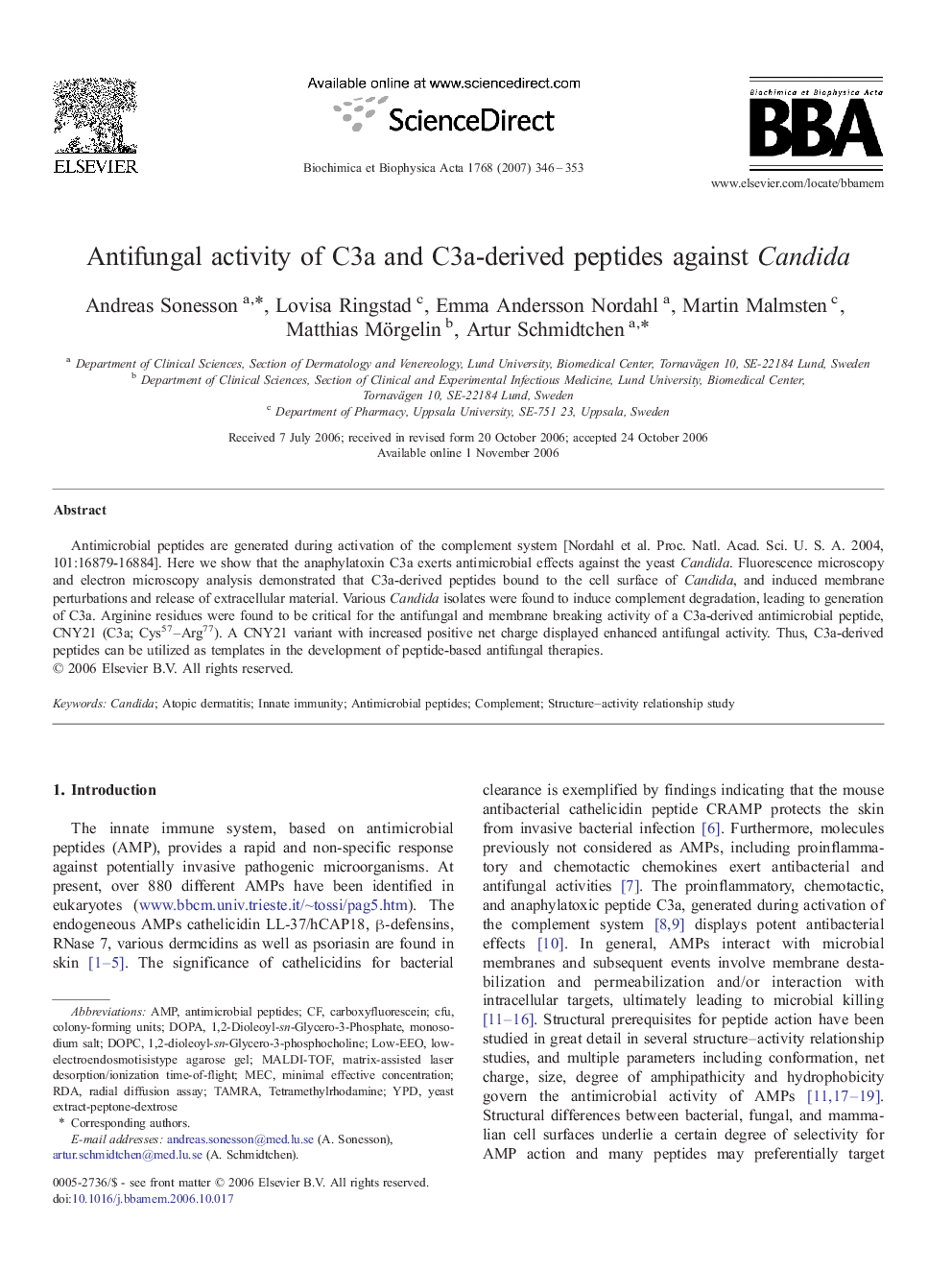| Article ID | Journal | Published Year | Pages | File Type |
|---|---|---|---|---|
| 1945959 | Biochimica et Biophysica Acta (BBA) - Biomembranes | 2007 | 8 Pages |
Antimicrobial peptides are generated during activation of the complement system [Nordahl et al. Proc. Natl. Acad. Sci. U. S. A. 2004, 101:16879-16884]. Here we show that the anaphylatoxin C3a exerts antimicrobial effects against the yeast Candida. Fluorescence microscopy and electron microscopy analysis demonstrated that C3a-derived peptides bound to the cell surface of Candida, and induced membrane perturbations and release of extracellular material. Various Candida isolates were found to induce complement degradation, leading to generation of C3a. Arginine residues were found to be critical for the antifungal and membrane breaking activity of a C3a-derived antimicrobial peptide, CNY21 (C3a; Cys57–Arg77). A CNY21 variant with increased positive net charge displayed enhanced antifungal activity. Thus, C3a-derived peptides can be utilized as templates in the development of peptide-based antifungal therapies.
